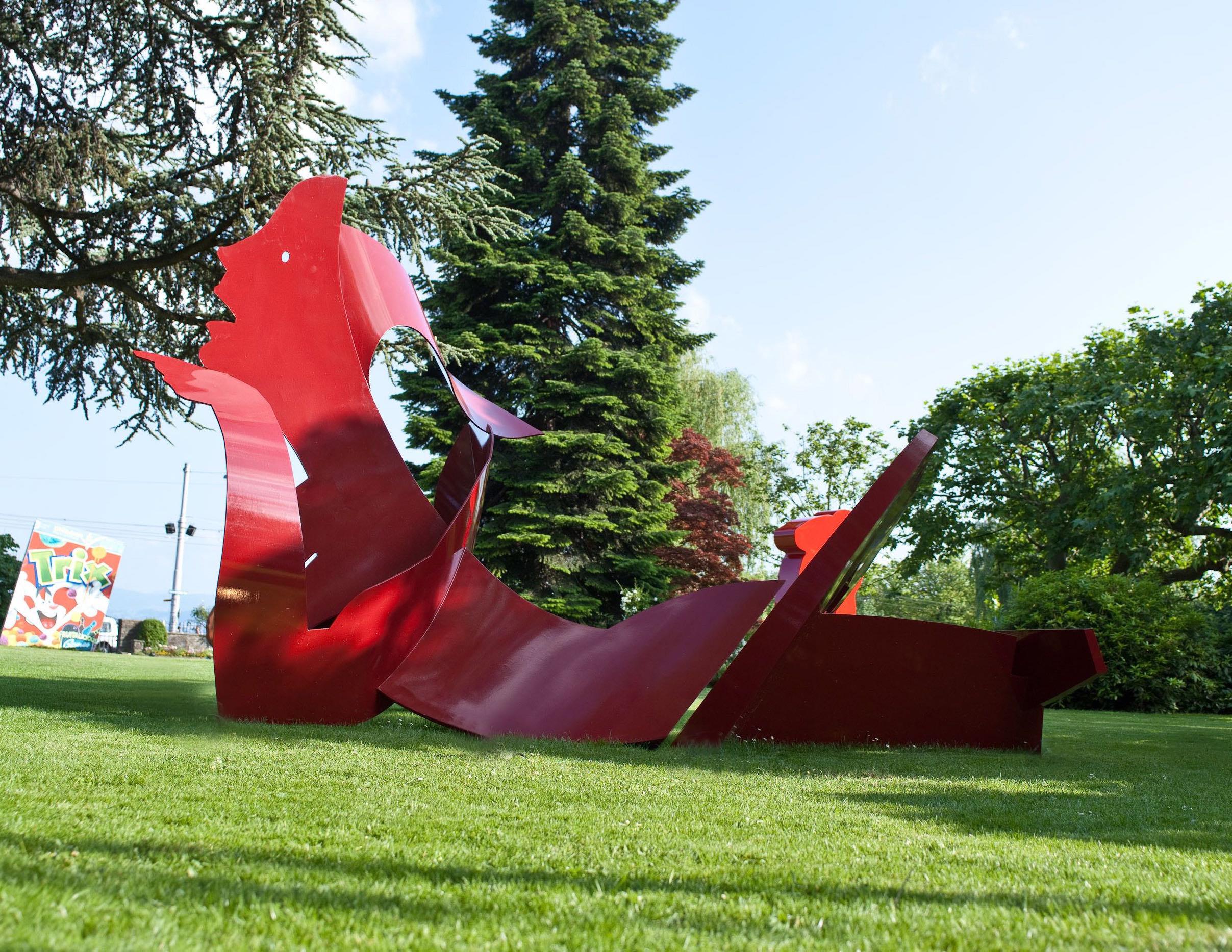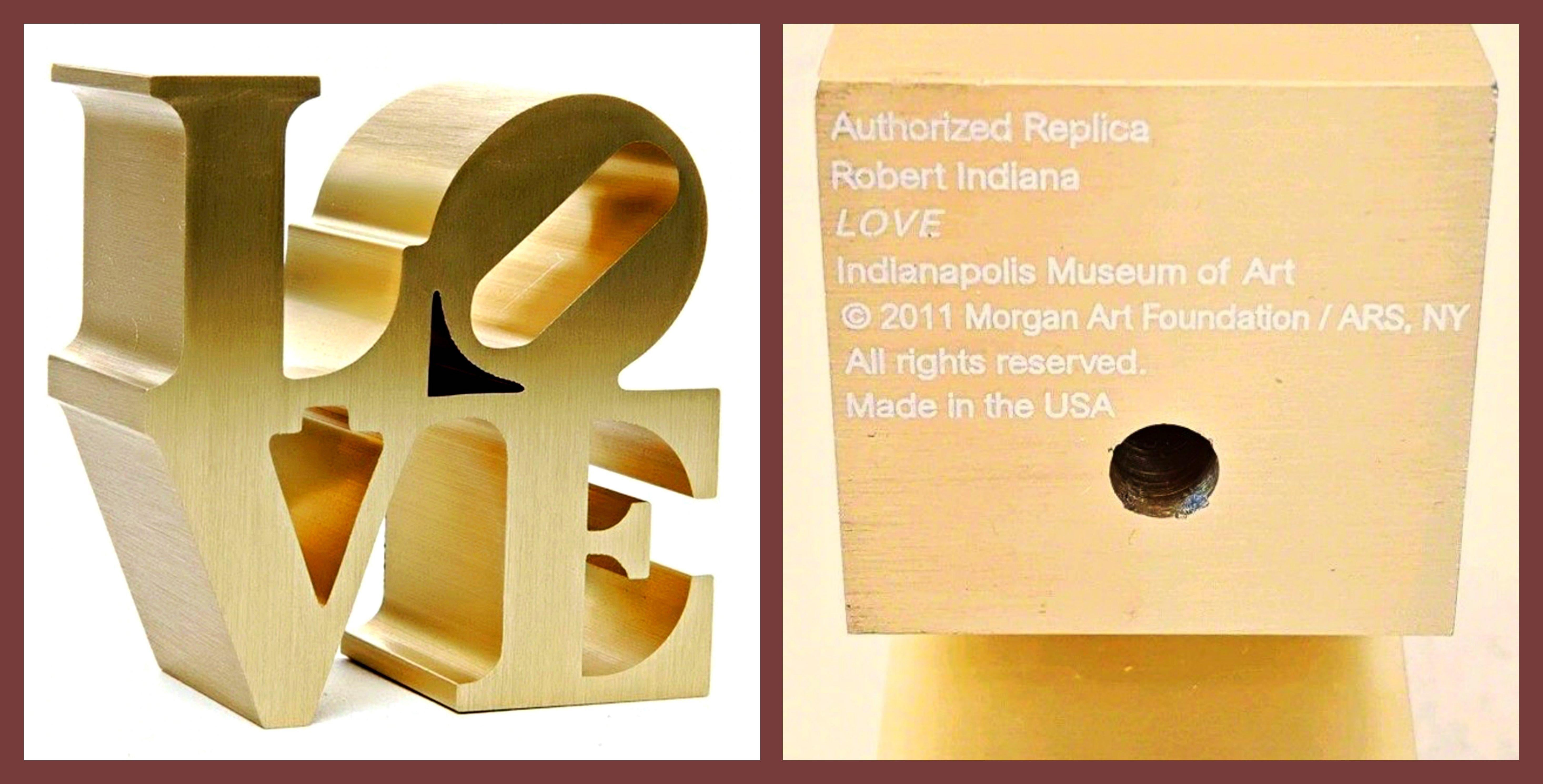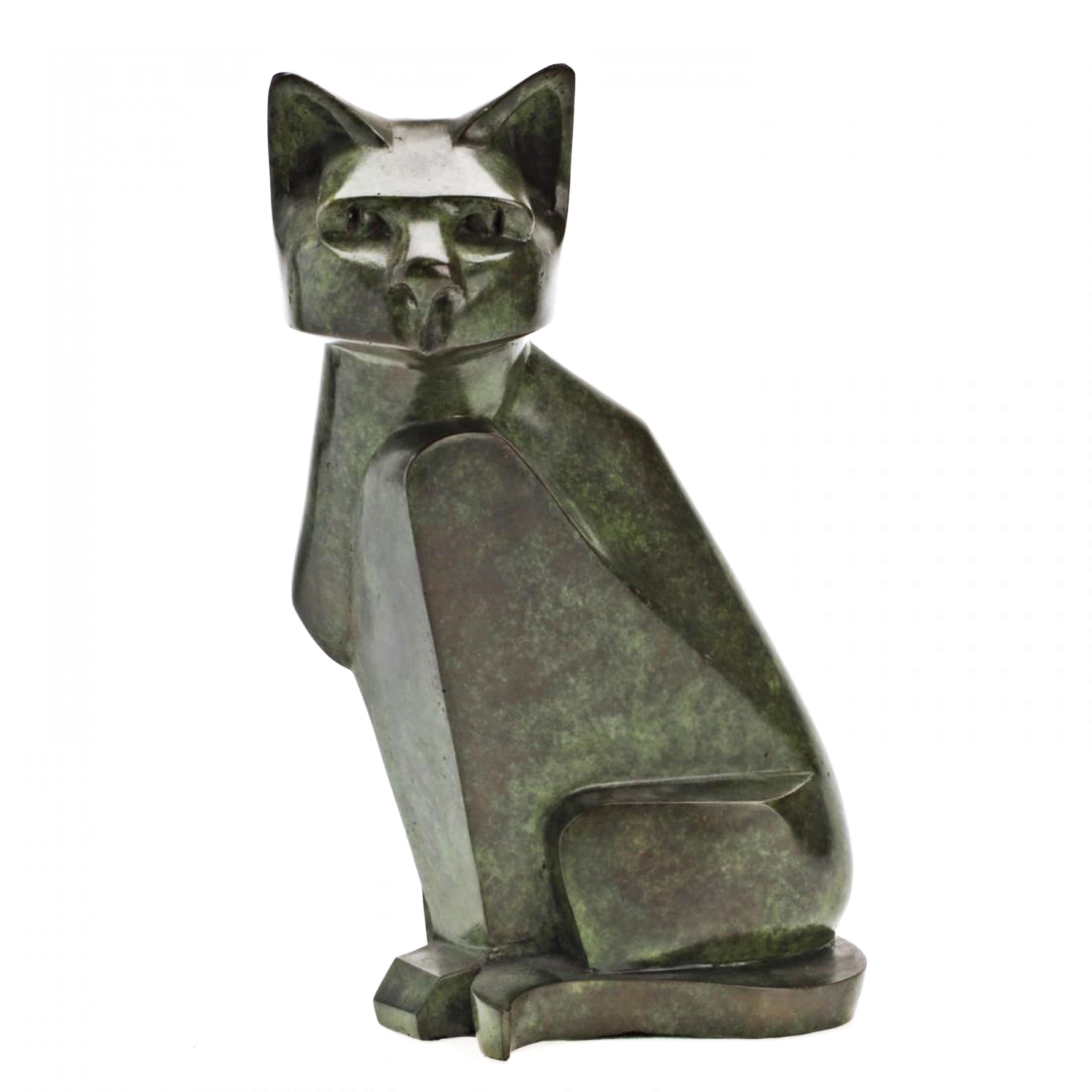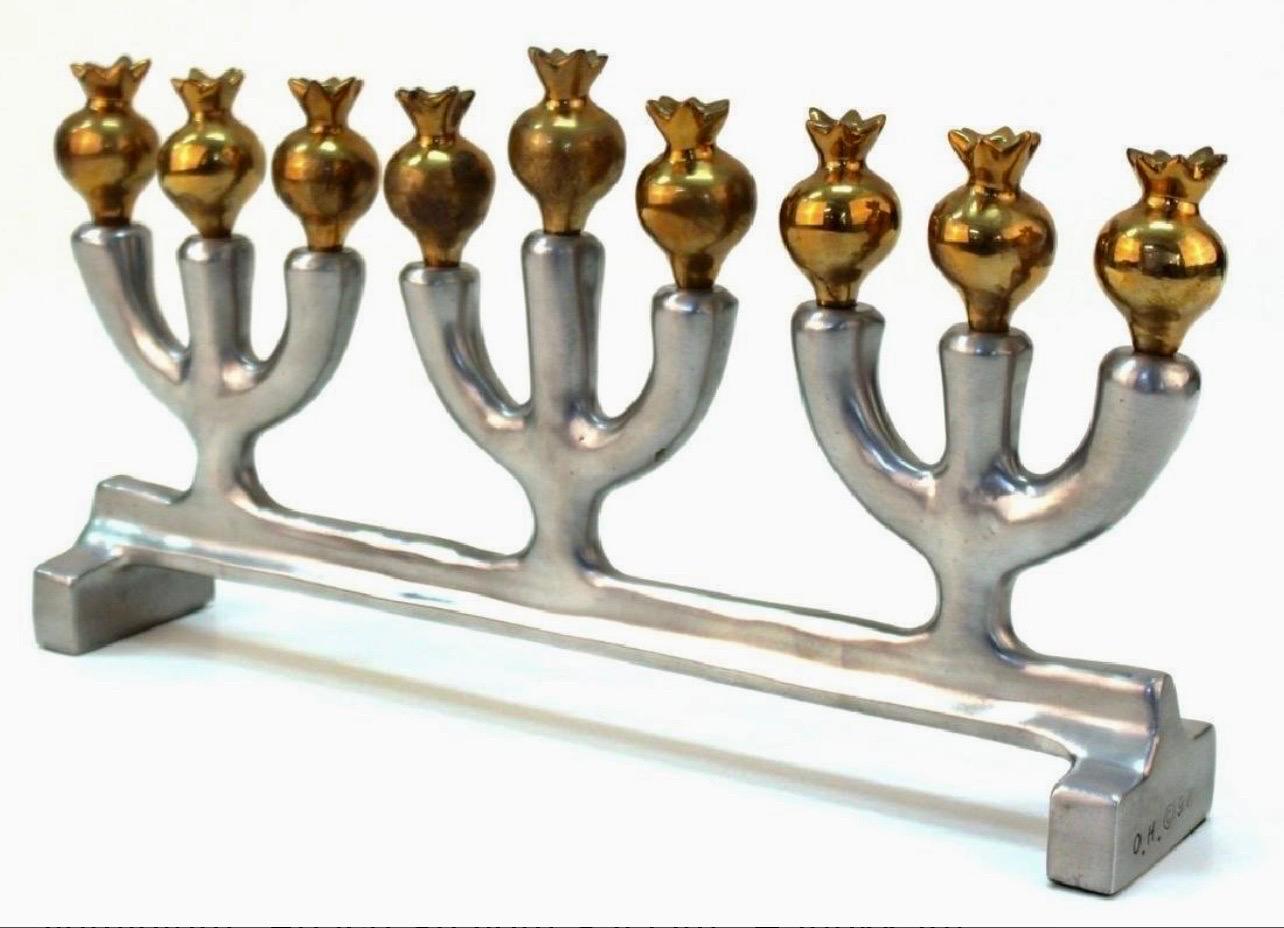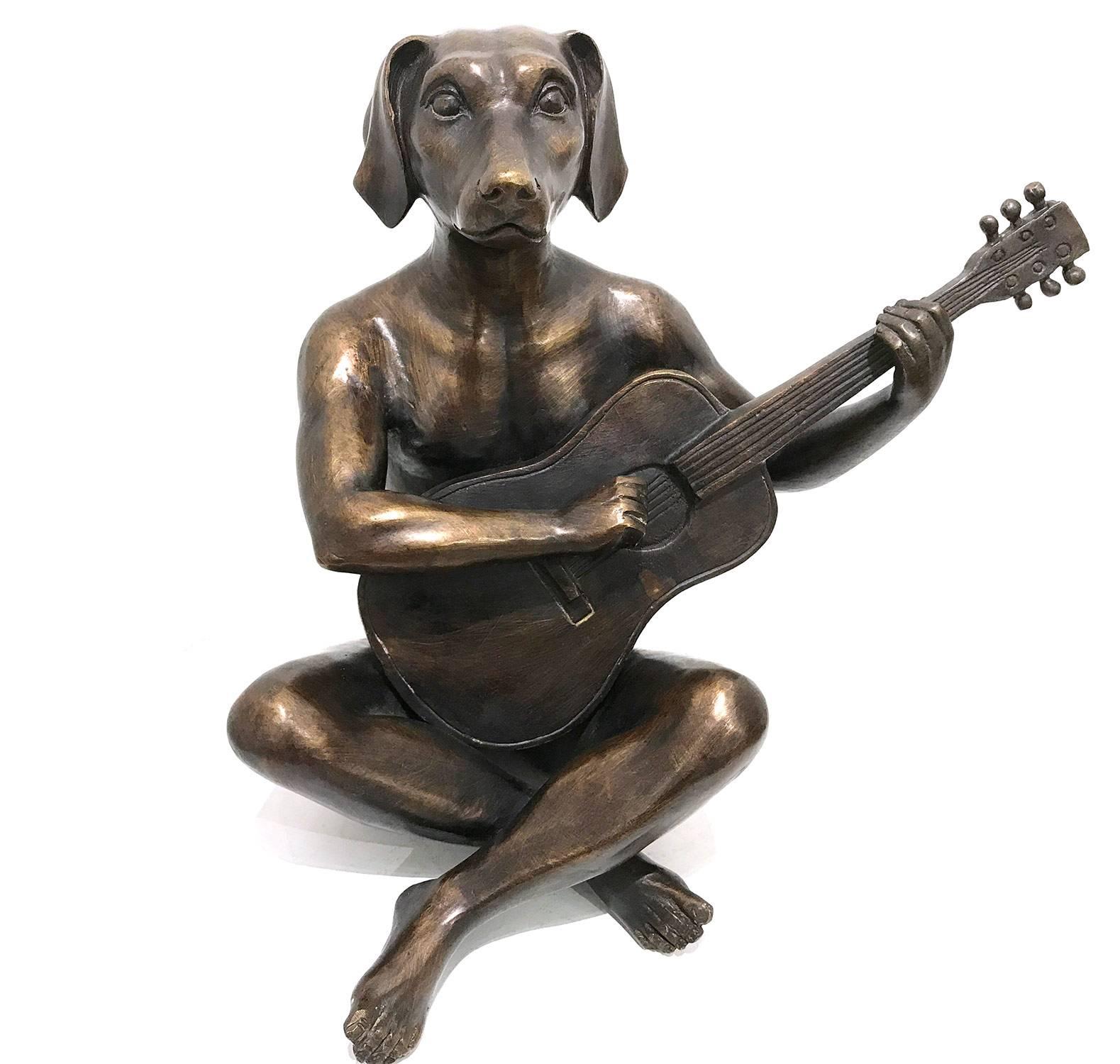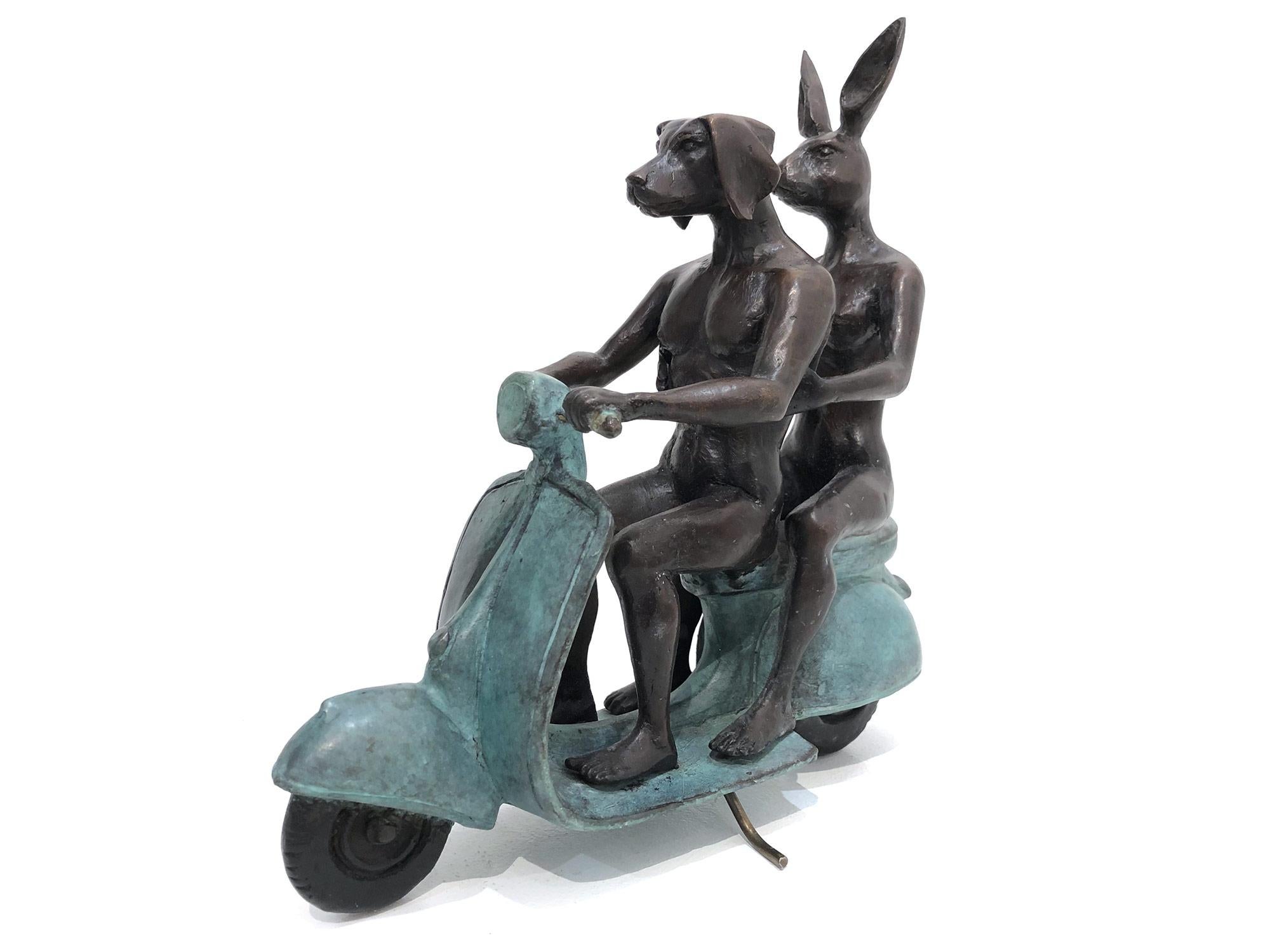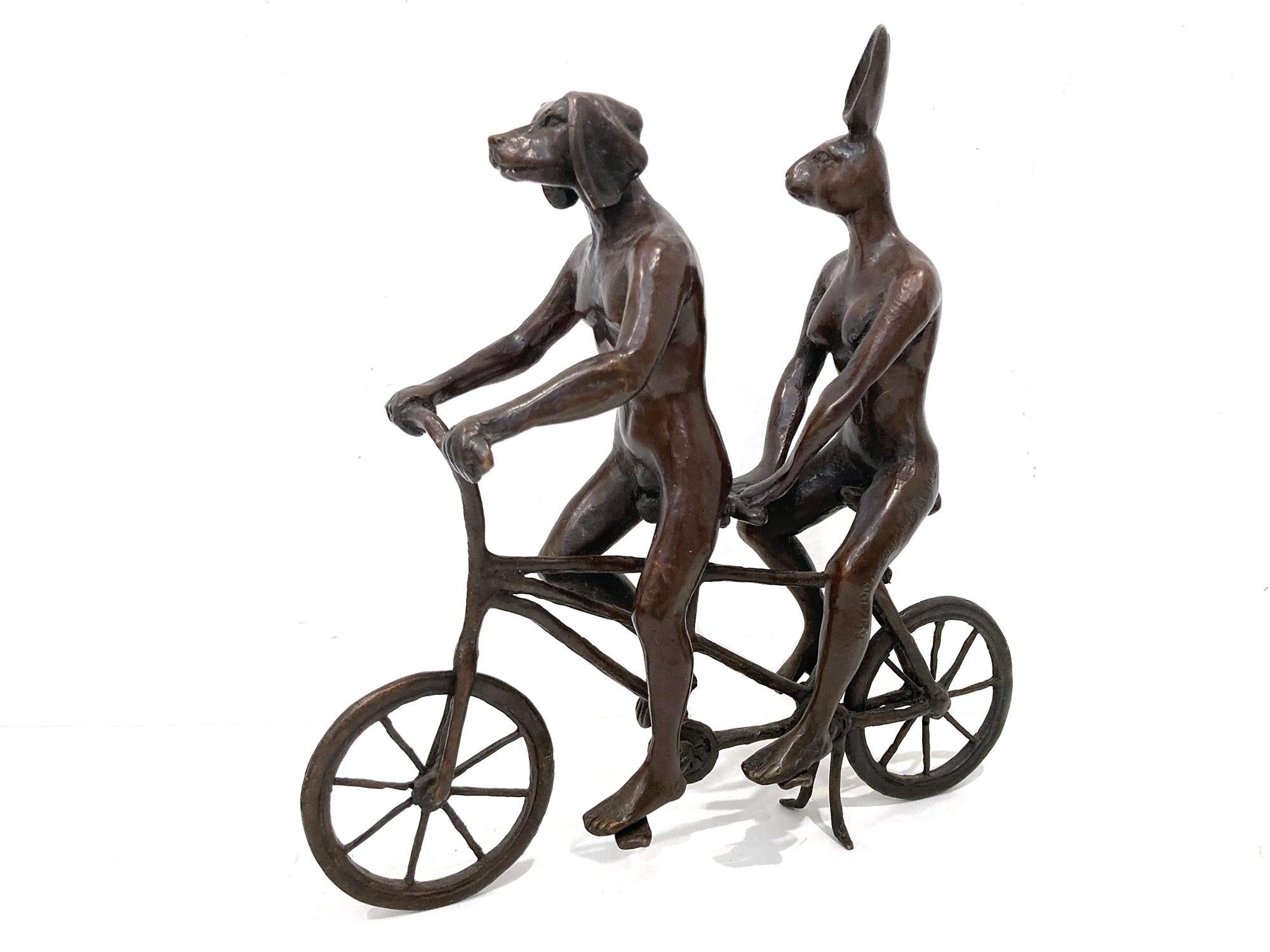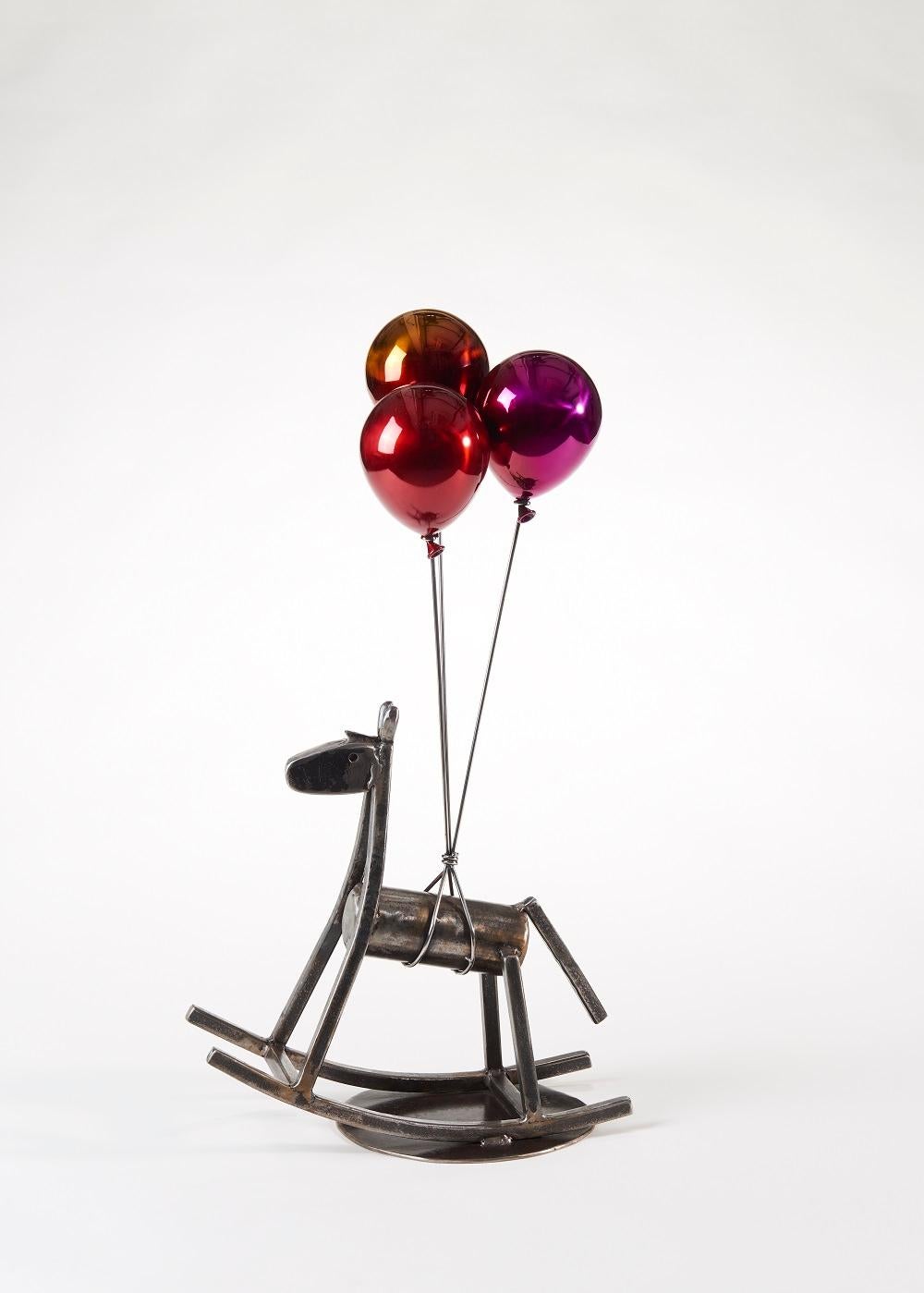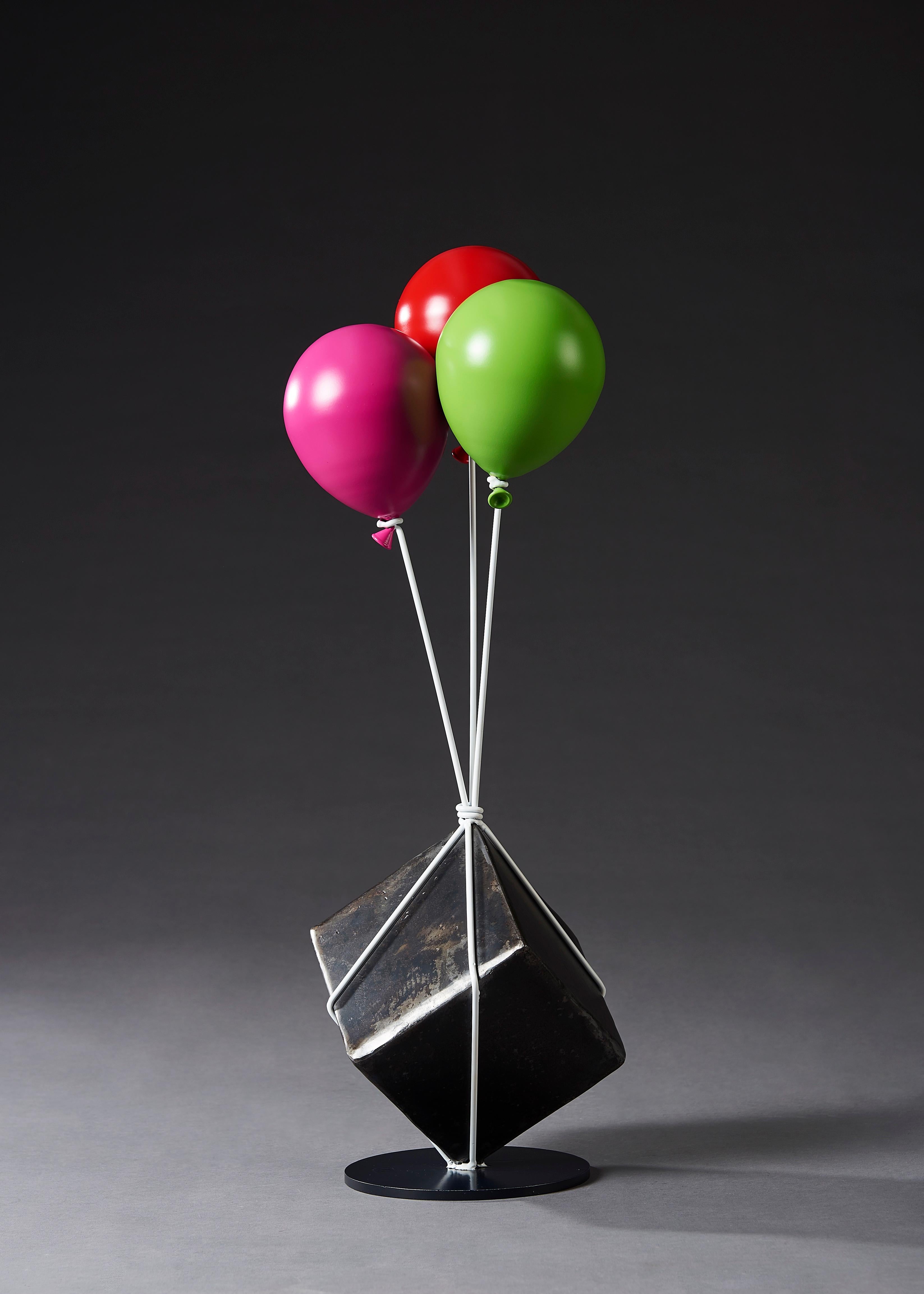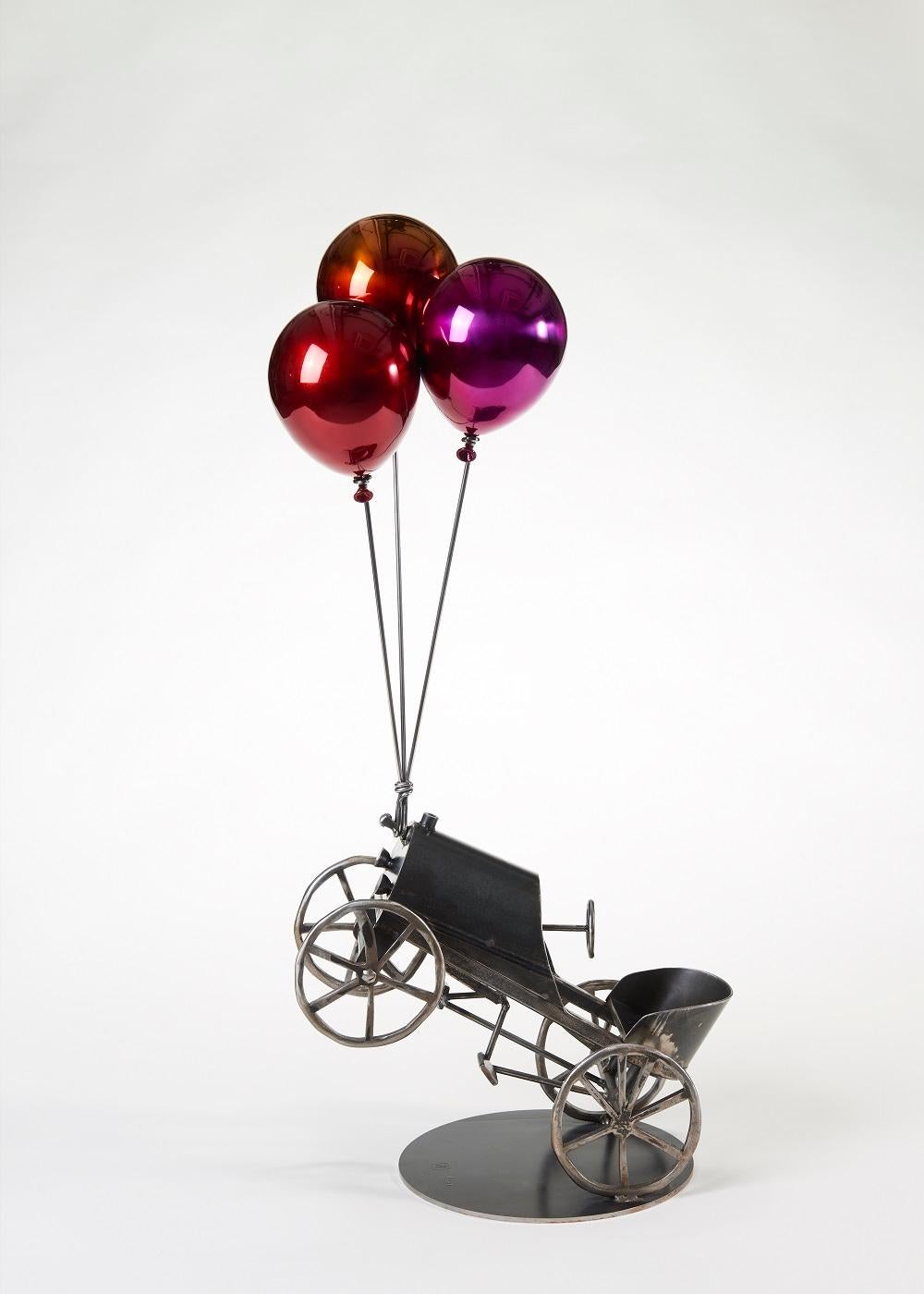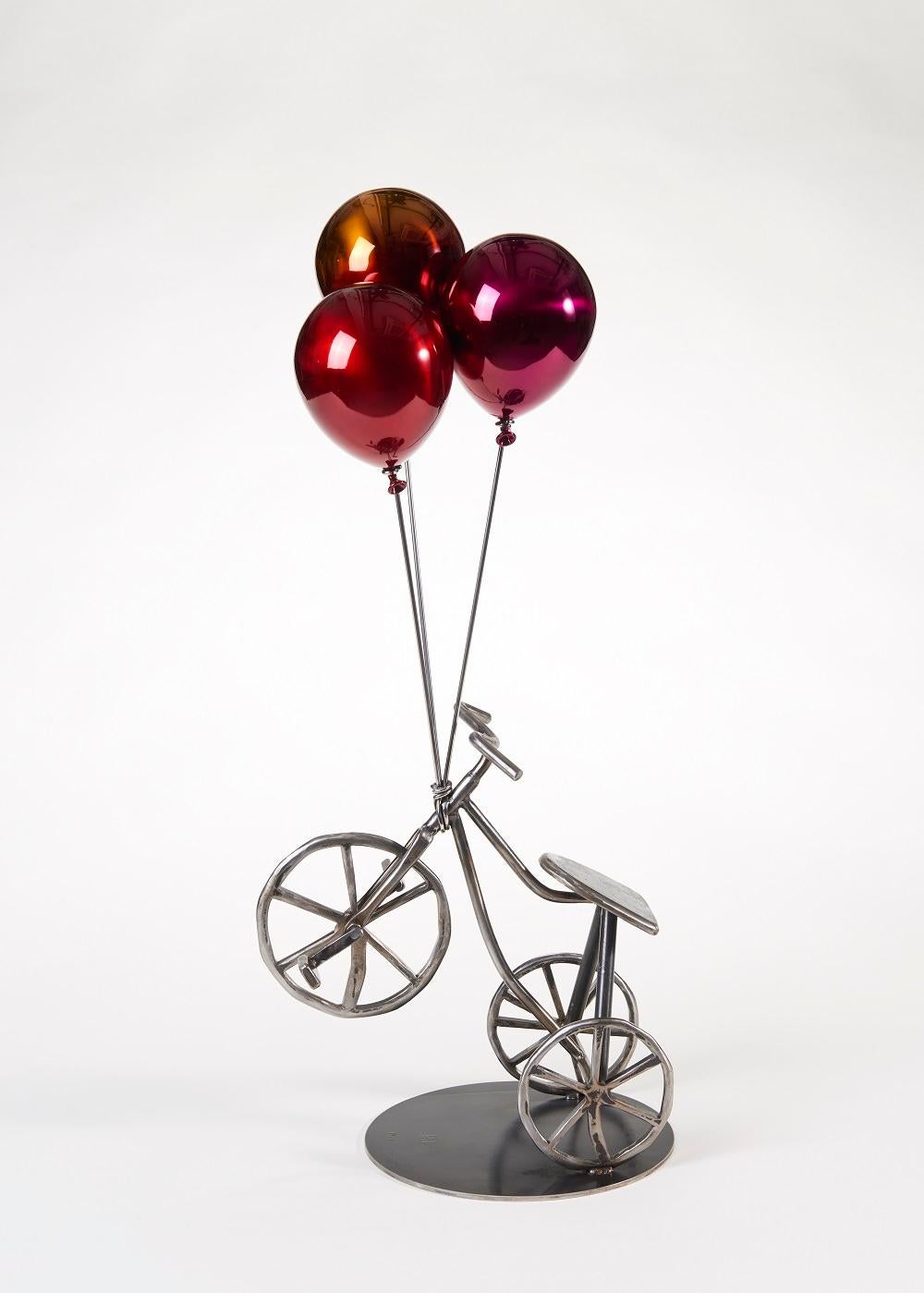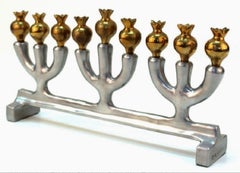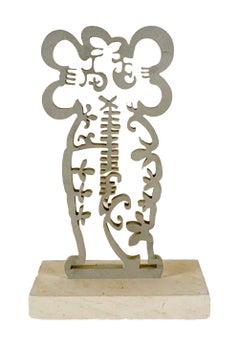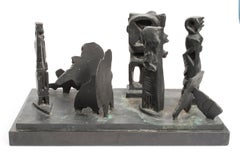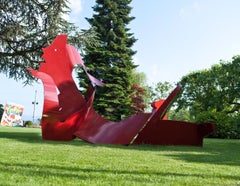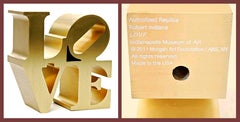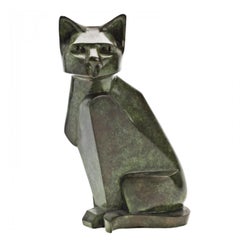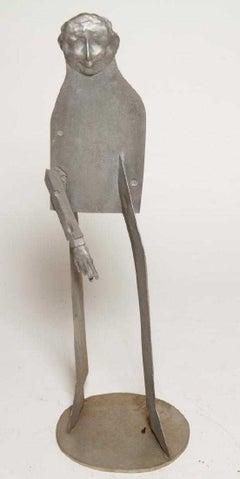
1960s Pop Art Unique Cast Aluminum Sculpture Cool Cat Bell Bottoms Americana
View Similar Items
William King (b.1925)1960s Pop Art Unique Cast Aluminum Sculpture Cool Cat Bell Bottoms Americana1968
1968
About the Item
- Creator:William King (b.1925) (1925 - 2015, American)
- Creation Year:1968
- Dimensions:Height: 40.5 in (102.87 cm)
- Medium:
- Movement & Style:
- Period:
- Condition:good. minor wear and grime. back arm needs tightening.
- Gallery Location:Surfside, FL
- Reference Number:1stDibs: LU3823761381
William King (b.1925)
American artist William King was best known for his comedic sculptures — working in clay and a range of metals, he created a wide variety of toy-like figures over the years that were cartoonish in their contorted forms and unlikely poses. King emphasized posture and body language in his art and poked fun at societal conventions as well as how we navigate the trials of our daily lives in a cheerful, clever manner.
Born in Jacksonville, Florida, King grew up in Coconut Grove, a historic Miami neighborhood. He studied at the University of Florida and later moved to New York City, finishing his studies at the Cooper Union in the late 1940s. King subsequently traveled to Rome on a Fulbright scholarship and explored the arts of Europe, including in London and Athens. In 1953, after returning to the United States, he began teaching at the Brooklyn Museum Art School.
In 1954, King had his first solo show at Alan Gallery in New York and continued to exhibit in and around the city until 2014. He worked across a wide variety of media, most frequently metal, such as bronze, aluminum and steel of varying finishes. His more serious pieces saw an integration of darker materials with rougher textures to amplify his figures' reflective, dismayed or generally somber expressions.
King received numerous awards for his work, including acknowledgments from the Guggenheim Foundation, National Endowment for the Arts and the San Francisco Arts Commission, as well as an honorary doctorate from the San Francisco Art Institute.
Find original William King figurative sculptures, abstract sculptures and prints on 1stDibs.
- Rare Oded Halahmy Cast Sculpture Art Menorah Artisan Judaica in Jewish MuseumLocated in Surfside, FLOded Halahmy (Iraqi-Israeli, b. 1938) Bronze and aluminium "Peace Shalom Salaam" Hanukkah/ Chanukah menorah, 1997 The base signed on one side with his stamped initials, "O.H. © 97." This simple pomegranate menorah by Iraqi art...Category
Early 2000s Pop Art Figurative Sculptures
MaterialsMetal
- Abstract Metal Sculpture Navajo Native American Indian Art Woman Pollen KeeperBy Melanie YazzieLocated in Surfside, FLMelanie Yazzie (1966-) Pollen Keeper II (maquette) Powder-coated metal, 2008 Hand signed, titled, dated and numbered 2/30, attributed, titled, dated and numbered again to paper label Mounted to a white composition plinth Provenance: The Freund Family Collection Melanie Yazzie is a Navajo sculptor, painter, printmaker, and professor. She teaches at the University of Colorado at Boulder. Yazzie was born in 1966 in Ganado, Arizona, United States. She is Navajo of the Áshįįhí, born for Tó Dichʼíinii. She grew up on the Navajo Nation. Although she grew up on the Navajo Nation, Melanie Yazzie is of the Salt Water Clan born for the Bitter Water Clan. She first studied art at the Westtown School in Pennsylvania. Yazzie earned a BA in Studio Art with a minor in Spanish from Arizona State University in 1990 and an MFA in printmaking from the University of Colorado at Boulder in 1993. Melanie Yazzie works a wide range of media that include printmaking, painting, sculpting, and ceramics, as well as installation art. Her art is accessible to the public on many levels and the main focus is on connecting with people and educating people about the contemporary status of one indigenous woman and hoping that people can learn from her experience. Her subject matter is significant because the serious undertones reference native postcolonial dilemmas. Melanie's work focuses primarily on themes of indigenous people. Her work often brings images of women from many indigenous cultures to the forefront. Thus her work references matrilineal systems and points to the possibility of female leadership. Yazzie is known for her multilayered monotype prints that focus on storytelling and reflect her dreamtime friends and companions. The works are filled with colors and textures that reflect different world. The works are made with stencils and often she is printing with soy based inks called Akua inks that are safe for the artist and the environment. The works most often are printed on Arches 88 due to the absorbing quality of that 100% rag paper. It is a fine art paper made in France and very soft to the touch. It is a paper designed originally for screen printing but is the perfect surface for many of the works Yazzie creates. The works often are monotypes as opposed to monoprints. So the works are a one of a kind work of art and not made in multiples. She is a Professor and Head of Printmaking at the University of Colorado at Boulder. She teaches printmaking courses and travels extensively to indigenous communities within the United States and abroad. She can always be found through the University of Colorado Art and Art History Department. In addition to teaching at the Institute of American Indian Arts, the College of Santa Fe (now Santa Fe University of Art and Design), Boise State University, and the University of Arizona, Yazzie has taught at the Pont Aven School of Contemporary Art in France. Yazzie has led over 100 international print exchanges over a 20-year time period. Many of these exchanges include artists from Siberia, Japan, New Zealand, Australia, Canada, Mexico, and Germany. In 2012, the Denver Art Museum welcomed Yazzie as artist-in-residence, making her the first in the Native Arts department. A selection of major exhibitions from the 1990s to present include "Between Two Worlds" (2008) at Arizona State University, "Traveling" at the Heard West Museum (2006), "About Face: Self-Portraits by Native American, First Nations, and Inuit Artists" at the Wheelwright Museum (2005), "Making Connections" (2002) in Bulova, Russia, "Navajo in Gisborne" (1999) in Gisborne, New Zealand and "Watchful Eyes" (1994) at the Heard Museum. In September 2013 she co-curated the exhibition "Heart Lines: Expressions of Native North American Art" in Colorado University Art Museum, partially based on her private collection and including her work "Pollen Girl". Artists featured: Norman Akers, Maile Andrade, Kenojuak Ashevak, Pitseolak Ashoona, Corwin Clairmont, Jimmie Durham...Category
Early 2000s Contemporary Abstract Sculptures
MaterialsMetal
- Brutalist Modern Abstract Bronze Sculpture Metropolis Manner of Louise NevelsonBy Abbott PattisonLocated in Surfside, FLA very heavy, massive bronze sculpture by an important Chicago sculptor. Signed and marked "Firenze" with "Fuse Marinelli". METROPOLIS. Seven abstract shapes on black marble base. 1...Category
20th Century Modern Abstract Sculptures
MaterialsMarble, Bronze
- The Test, Assembled Kinetic Modernist Sculpture Puzzle ConstructionBy William King (b.1925)Located in Surfside, FL"The Test," 1970 Aluminum sculpture in 5 parts. Artist's cipher and AP stamped into male figure, front, 20 5/16" x 12 1/2" x 6 5/7" (approx.) American sculptor King is most noted for his long-limbed figurative public art sculptures depicting people engaged in everyday activities such as reading or conversing. He created his busts and figures in a variety of materials, including clay, wood, metal, and textiles. William Dickey King was born in Jacksonville, Florida. As a boy, William made model airplanes and helped his father and older brother build furniture and boats. He came to New York, where he attended the Cooper Union and began selling his early sculptures even before he graduated. He later studied with the sculptor Milton Hebald and traveled to Italy on a Fulbright grant. Mr. King worked in clay, wood, bronze, vinyl, burlap and aluminum. He worked both big and small, from busts and toylike figures to large public art pieces depicting familiar human poses — a seated, cross-legged man reading; a Western couple (he in a cowboy hat, she in a long dress) holding hands; a tall man reaching down to tug along a recalcitrant little boy; a crowd of robotic-looking men walking in lock step. Mr. King’s work often reflected the times, taking on fashions and occasional politics. In the 1960s and 1970s, his work featuring African-American figures (including the activist Angela Davis, with hands cuffed behind her back) evoked his interest in civil rights. But for all its variation, what unified his work was a wry observer’s arched eyebrow, the pointed humor and witty rue of a fatalist. His figurative sculptures, often with long, spidery legs and an outlandishly skewed ratio of torso to appendages, use gestures and posture to suggest attitude and illustrate his own amusement with the unwieldiness of human physical equipment. His subjects included tennis players and gymnasts, dancers and musicians, and he managed to show appreciation of their physical gifts and comic delight at their contortions and costumery. His suit-wearing businessmen often appeared haughty or pompous; his other men could seem timid or perplexed or awkward. Oddly, or perhaps tellingly, he tended to depict women more reverentially, though in his portrayals of couples the fragility and tender comedy inherent in couplehood settled equally on both partners. His first solo exhibit took place in 1954 at the Alan Gallery in New York City. King was elected to the American Academy of Arts and Letters in 2003, and in 2007 the International Sculpture Center honored him with the Lifetime Achievement in Contemporary Sculpture Award. Mr. King’s work is in the collections of the Metropolitan Museum of Art, Guggenheim Museum, Whitney Museum and the Museum of Modern Art in New York and the Hirshorn Museum at the Smithsonian American Art Museum in Washington, among other places, and he had dozens of solo gallery shows in New York and elsewhere. Reviews of his exhibitions frequently began with the caveat that even though the work was funny, it was also serious, displaying superior technical skills, imaginative vision and the bolstering weight of a range of influences, from the ancient Etruscans to American folk art to 20th-century artists including Giacometti, Calder and Elie Nadelman. The New York Times critic Holland Cotter once described Mr. King’s sculpture as “comical-tragical-maniacal,” and “like Giacomettis conceived by John Cheever.”Category
1970s American Modern Figurative Sculptures
MaterialsMetal
- Israeli Modernist Arts & Crafts Copper Lion Plaque Bezalel Schatz Yaad StudioBy Bezalel SchatzLocated in Surfside, FLHand made in israel handwrought tray, platter in Silver plated copper modernist tray, engraving and hammer work, with a whimsical mod lion and design decorations. From the YAAD works...Category
1960s Modern Abstract Sculptures
MaterialsCopper
- Modernist Hand Forged Iron Mosaic Sculpture Animal Ram Israeli David PalomboBy David PalomboLocated in Surfside, FLHeavy Hand Forged Brutalist Iron Ram or Goat Sculpture David Palombo was an Israeli sculptor and painter. He was born in Turkey to a traditional family and immigrated to the Land of Israel with his parents in 1923. They lived in the Nahalat Shiva neighborhood of Jerusalem. In 1940 he began his studies at Bezalel Academy of Arts and Design, and from 1942 was a student of sculptor Ze’ev Ben-Zvi. For a period of time, Palombo was an assistant at Ben-Zvi’s studio and also taught at Bezalel. During this period he was also a member of the “Histadrut HaNoar HaOved VeHaLomed” (The General Federation of Students and Young Workers in Israel). In the 1940s he took art lessons at night. In 1948 he went to Paris, where he visited the studio of the sculptor Constantin Brancusi whose work influenced him. Around 1958 he married the artist Shulamit Sirota. In 1960 he quit his job to devote himself to art. In 1964 he married for the second time to the artist Yona Palombo. The two of them went to live in an abandoned home on Mount Zion in Jerusalem. In 1966 he was killed when the motorcycle on which he was riding ran into a chain stretched across the street to prevent the desecration of Shabbat. His widow opened a museum in their home that was active until the year 2000. Work by Palombo is included in the Judaic collection of the Jewish Museum (a well known Hanukkah menora). Palombo executed the impressive metal gates of the Tent of Remembrance at the Yad Vashem, the memorial to the martyrs of the holocaust, as well as the gates to the Knesset Building the United Nations Educational Scientific and Cultural Organization (Unesco award) awarded him a scholarship for study in Japan. He worked in marble, granite, bronze, iron and steel. as well as with glass mosaic tiles. Palombo’s early works, in the 1950s, were influenced by modernist sculptors such as Brancusi. These works were composed of abstract images from nature and were carved out of stone or wood. At the end of the 1950s he began making metal sculptors, using the technique of welding. His work took on a more abstract and expressive character. Education 1940 Painting with Isidor Ascheim, New Bezalel School for Arts and Crafts, Jerusalem 1942 Sculpture with Zeev Ben Zvi, Jerusalem 1956 Mosaic, Ravenna, Italy 1958 Welding Course Awards And Prizes 1966 UNESCO Award Exhibitions: Sculpture in Israel, 1948-1958 Mishkan Museum of Art, Kibbutz Ein Harod Artists: Zvi Aldouby, Yitzhak Danziger, Arieh Merzer, Dov Feigin, Aaron Priver, David Palumbo, Menashe Kadishman, Kosso Eloul, Yehiel Shemi, Zahara Schatz. The Spring Exhibition of Jerusalem Artists, Artists' House, Jerusalem Artists: Palombo, David Bezalel Schatz, Mordechai Levanon, Fima, Ludwig Blum 12 Artists, The Bezalel National Museum, Jerusalem Avraham Ofek, Aviva Uri, Avigdor Arikha, Yosl Bergner, Lea Nikel, Palombo, Ruth Zarfati, General Exhibition, Art in Israel 1960 Tel Aviv Museum of Art Artists: Naftali Bezem, Nachum Gutman, Shraga Weil, Shraga, Marcel Janco, Ruth SchlossCategory
Mid-20th Century Arte Povera Abstract Sculptures
MaterialsIron
- Juno Figurative Outdoor Pop Art sculpture Red Painted Steel PersonLocated in Zug, CHALLEN JONES (b. 1937) Juno 2008 Painted steel 275 x 530 x 265 cm 108.27 x 208.66 x 104.33 inches Unique work in two parts The Monumental sculpture ‘Juno’ – named after the roman god...Category
20th Century Pop Art Abstract Sculptures
MaterialsSteel
- LOVE (Authorized replica, official stamp of Indianapolis Museum of Art & artist)By Robert IndianaLocated in New York, NYRobert Indiana LOVE (Sculpture Stamped with Indianapolis Museum and Artist Stamp), 2009 Brushed Aluminum (Gold) Stamped with Artist's Copyright & Indianapolis Museum of Art/2011 Morgan Art Foundation/ARS, NY Stamped/incised w/text: "Authorized Replica/Robert Indiana/LOVE/Indianapolis Museum of Art/2011 Morgan Art Foundation/ARS, NY 3 × 3 × 1 1/2 inches Unframed Since first appearing on the Museum of Modern Art’s 1965 Christmas card, Robert Indiana’s “LOVE” quickly permeated the popular imagination, appearing everywhere from life-size sculptures to government-issued stamps. The design’s appeal was timeless, yet also emblematic of the idealistic and free-loving 1960s. As art legend has it, Indiana was first bemused and later conflicted about the instant runaway success of his design, worried that it may have ruined his reputation among the art world elite as a one-hit wonder. Despite the artist’s private insecurities, “LOVE” remains one of the most treasured works in 20th-century American sculpture—breaking $4.1 million at auction in 2011. Another edition from this authorized, artist approved series recently sold at Christie's in Paris for over $12,000. LOVE (Limited Edition Artist Authorized, with Incised Indianapolis Museum of Art & Morgan Foundation Stamp and Artist Copyright). This is a limited edition artist authorized miniature of the Indianapolis Museum of Art's giant outdoor...Category
Early 2000s Pop Art Figurative Sculptures
MaterialsMetal
- CAT Catalogue Raisonne Ref: Knight, CR-406 cast bronze sculpture by famed artistBy Gerald LaingLocated in New York, NYGerald Laing Cat, 1983 Cast bronze (hollow core cast) Bears artists full incised signature, artist's copyright logo, as well as stamped signature on the front, Edition 1/9 13 1/2 × 8 3/4 × 6 1/2 inches A magnificent cast bronze sculpture, rarely seen on the market by Gerald Laing, one of the leading British artists of his generation. Catalogued as CR-406 in the 2017 Catalogue Raisonne published by Lund Humphries and the Estate of Gerald Laing. One of only nine editions. This work was acquired from the Estate of distinguished Pop Art collector Arthur C. Carr of Columbia University , who befriended many of the artists whose works he collected. Editions of this work were exhibited in the following venues: GERALD LAING: SCULPTURE 1968 - 1999 The Fine Art Society 148 New Bond Street London UK 22 March - 15 April 1999 GERALD LAING Albert Totah Gallery 152 Wooster Street New York City New York USA, 24 January - 21 February 1987 GERALD LAING PAINTINGS AND SCULPTURE 1963-1983 Herbert Art Gallery Jordan Well Coventry UK 10 September - 9 October 1983...Category
1980s Pop Art Abstract Sculptures
MaterialsBronze
- EIGHT (SCULPTURE)By Robert IndianaLocated in Aventura, FLEnamel and steel sculpture. Measures 18 x 18 x 10 inches (with base). Stamped 'R. Indiana' with edition, date and foundry. Edition 2/8. Artwork is in excellent condition. All ...Category
Early 2000s Pop Art Abstract Sculptures
MaterialsMetal
- "He Played Like He Was Keith Richards" Dogman with Guitar Bronze SculptureBy Gillie and Marc SchattnerLocated in New York, NYA whimsical yet very strong piece depicting the Dog Man from Gillie and Marc's iconic figures of the Dog/Bunny Human Hybrid, which has picked up much esteem across the globe. Here we...Category
2010s Pop Art Abstract Sculptures
MaterialsBronze
- They were the Authentic Vespa Riders in Rome (Bronze with Green Patina)By Gillie and Marc SchattnerLocated in New York, NYA whimsical yet very strong piece depicting the two figures from Gillie and Marc's iconic figures of the Dog/Bunny Human Hybrid, which has picked up much esteem across the globe. Her...Category
2010s Pop Art Figurative Sculptures
MaterialsBronze
